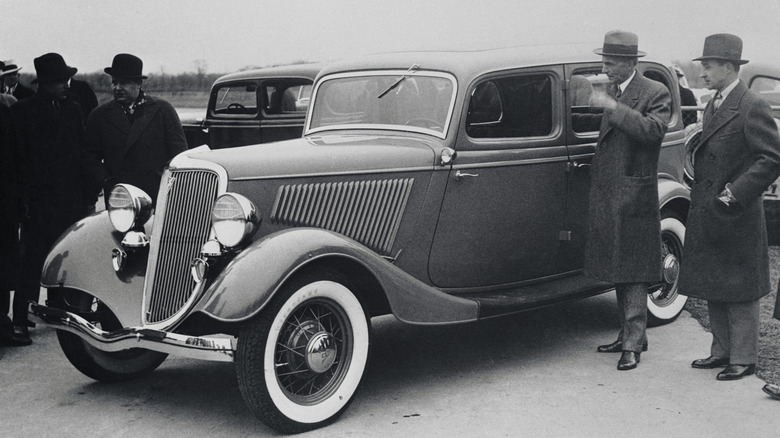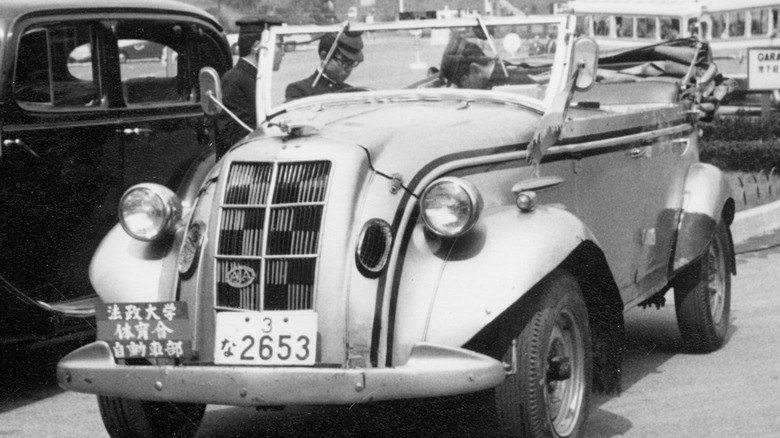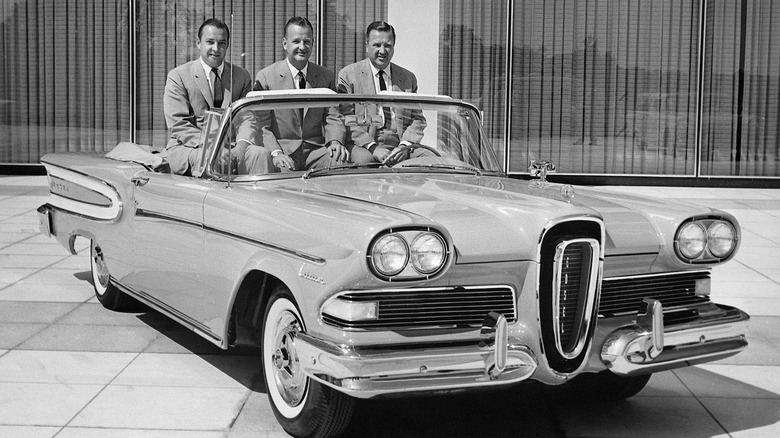Why Toyota And Ford Kept Trying (And Failing) To Team Up In The 1930s
For decades, Toyota and Ford have both been recognized as leading names in the world of automobile manufacturing. Ford, of course, is renowned for its revolutionary manufacturing and production practices, which led to Ford's iconic first production car, the Model T. Toyota would go on to introduce a superior manufacturing cycle, known as the Toyota Production System, which helped the company produce some of the most successful cars of all time and remain the top-selling automaker in the world to this day.
As you can imagine, these titans are fierce rivals that would be reluctant to work with one another nowadays. With each having established a distinct identity and success for itself, it's hard to envision any significant motivation to collaborate. However, this wasn't always the case for Toyota and Ford. In the earliest decades of car manufacturing, there was almost a time when the soon-to-be automotive giants would have come together. But sadly this — and several other instances to follow — never came to be.
Increased production efforts prompted Toyota and Ford's first potential partnership
The 1930s would mark Japan's entrance into the world of commercial automobile production. Several efforts were made to amp up the country's output to varying levels of success. A number of government-operated ministries came together to establish the Ministerial Conference on Establishing an Automobile Industry in 1934 to determine the production standards and policies that automotive companies would have to adhere to.
This resulted in the creation of the Automotive Manufacturing Industries Law, which came into effect in 1936. Both Yoshisuke Ayukawa's Automobile Manufacturing Company, later known as Nissan, and Kiichiro Toyoda's Toyoda Automatic Loom Works would be among the first manufacturers to work under these new policies. With the increased annual production requirements set in place, a partnership between Toyota, Nissan, and Ford-Japan was seriously considered. Despite a year of negotiations, however, the companies failed to reach an agreement, with Ford-Japan and GM-Japan even putting production on halt in 1939.
Three other alliance attempts also ended in failure
While the first attempt at a partnership between Ford and Toyota never came to fruition, it wouldn't be the last time the companies would make efforts to work together. But while the initial collaboration from the 1930s was meant to take place within one country, the later endeavors aimed for an international alliance.
Following a labor dispute in 1950, Toyota Motor Sales Co. Ltd. President Shotaro Kamiya, alongside Kanto Auto Works, Ltd. President Hidejiro Okuda, traveled to the United States to visit Ford. Along with using the visit to learn more about the U.S. production facility, the Toyota team was also scheduled to return to Japan with some Ford engineers. Sadly, the breakout of the Korean War ended the developing relationship, as the U.S. put strict new regulations on U.S. engineers.
Many other attempts to collaborate also flopped over the decades, including a joint venture in the 1960s for Toyota's first sports car, the Publica, and the creation of a passenger car in the 1980s. However, nothing substantial ever materialized. Former Toyota Motor Chairman Eiji Toyoda summarized these failed attempts in the book, "Toyota: Fifty Years in Motion": "I guess it was not in the cards."


